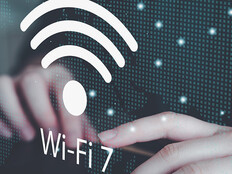1. Why Are Networking Upgrades Important in Healthcare?
Healthcare relies heavily on Wi-Fi for rapid, seamless access to patient records, histories and diagnostic images. With the rise of virtual care, providers depend on uninterrupted connections. Modernizing this vital infrastructure not only enhances performance and reliability but also improves security, helping to protect sensitive information from cyberthreats.
2. What Are Wi-Fi 6’s Current Capabilities?
Wi-Fi 6 is a high-efficiency protocol designed to support multiple devices and data streams. In healthcare’s congested, high-traffic settings, Wi-Fi 6 provides 9.6 gigabits per second of bandwidth, partitioned among devices, and is backward compatible with earlier standards. It also provides strong encryption to protect against security threats.
3. How Does Wi-Fi 6E Extend Those Capabilities?
By opening an additional frequency band for wireless communication, Wi-Fi 6E extends the capacity of Wi-Fi 6. This means many more available channels, reducing congestion and interference, and leading to better performance. As Extreme Networks explains, “It’s got more speed and bandwidth than the previous generation, and it’s not backward compatible, which means fewer bottlenecks from slower traffic.”












